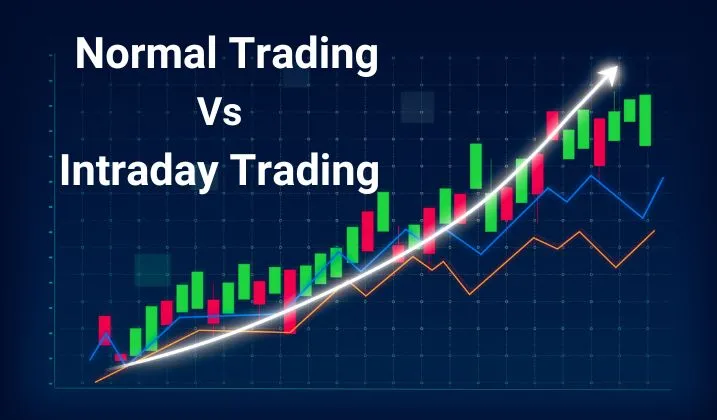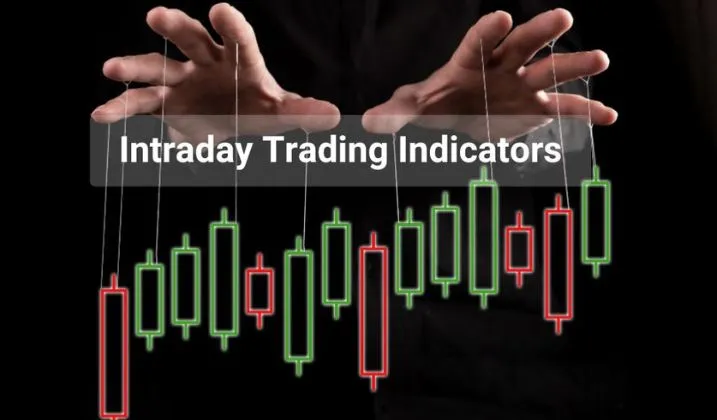
Everything You Need to Know About Intraday Trading
The stock market is a wonderful place for experts, but more complicated than anything for the eye that's just entering it. Technical analysis is the difference between wildly successful traders and those struggling to keep up with erratic trends. It's a powerful aid and a quality every trader wishes they had. Enrolling in a technical analysis course shouldn't even be something to think about, given the benefits at stake!
Intraday trading and day trading are used to describe the same form of activity. This sensational trade type allows you to buy and sell stocks within the same 24 hours or less. Overnight holding is not a feature of this method. The eagerness to effect such trades comes from the want to capitalise on extensive but short-term price changes. Anyone using this form of trading gets the nickname of day traders.
Join us as we break down the intraday trading definition, its rules, and more in this blog.
What is Intraday Trading?
Day-to-day trading, as some people know it, lets an investor buy and then sell stocks all in a day's work! The only reason to do something that seems questionable is to make the most of a price shift before it reverts back to normal.
Traders doing this must take note of the intraday market closing time as they must beat the clock to make their sales in time or face the transaction becoming delivery trading.
Basic Intraday Trading Rules
Knowing the rules beforehand can help to avoid issues, and they include:
- • These trades are completed promptly, and preferably they don't spill over to the next day.
- • Failure to do this can call forth penalties or convert transactions to delivery trading.
- • To ensure entering and exiting of positions within market hours, investors must choose high-liquidity stocks.
- • Managing and reducing risks are possible by enforcing a stop-loss order for these transactions.
- • It's not uncommon for traders to monopolise larger stocks, but this carries greater risk for them.
How is Intraday Trading Different from Normal Trading?
The greatest difference between intraday trading vs. delivery trading is the duration you get to keep stocks. Intraday doesn't allow carrying stocks overnight, but normal trading does and can even allow carrying stocks for months!
If you cannot keep up with the quickness of day-to-day trading, the normal delivery trading option is better suited to your needs.

Intraday Features
It isn't your typical trading method, and there is a lot of new information to gain:
- • The higher profit potential is due to the higher volatility these stocks possess.
- • Assuming you make it in time, and close the positions by night or rather the closing of the trading day, you avoid overnight shortfalls.
- • As a wise trader, you should know to look for highly liquid options to transact swiftly.
- • Traders may try to multiply earnings through leveraging, but it's too risky for some.
Benefits of Intraday Trading
Besides the quick and large profits, here is another benefit of intraday trading or two:
- • If you have a knack for picking out the right position, you can profit daily!
- • Transactions are over before you know it, and there is no worrying about them overnight.
- • Since experts only choose highly liquid options, they can seamlessly enter and exit positions with ease.
Different Types of Intraday Trading
It is an umbrella term, and there are sub-strategies one can apply to gain handsomely from equity intraday trading.
- 1. Momentum Trading - When exaggerated price movements take place, individuals can take control of the situation.
- 2. Scalping - This technique involves taking up several trades and making a small profit on each.
- 3. Breakout Trading - This involves engaging in trading with those stocks, which have surpassed their support level.
- 4. Reversal Trading - People who can predict reversing trends can enter or exit a position based on their predictions.
Intraday Trading Indicators
Whether you are experienced or a rookie, watching the indicators for intraday trading brings you closer to making a profitable decision.
- • Relative Strength Index (RSI) - It takes note of price movements and particularly the pace at which they happen.
- • Moving Averages (MA) - Judging the timelines helps to show a trend forming.
- • Moving Average Convergence Divergence (MACD) - This aims to check the direction in which momentum travels.
- • Bollinger Bands - These bands show if the price is stable or if changes have occurred recently.
Following each indicator well can help you know how to choose intraday stocks and when to make a swift exit.

How to Choose Stocks for Intraday Trading?
If you are still facing difficulty on how to choose stocks for intraday trading activities, here are some pointers:
- • Only select the stocks that can easily be bought and sold as it shows they are more liquid.
- • Look at how the price varies for a stock before deciding if it is a worthy selection.
- • Ideally, the price should vary regularly and offer short-lived changes.
- • Selecting stocks with firm trends surrounding them helps you predict where the price will be next.
- • Keep reading the news to hear about any recently announced stocks that provide opportunities.
How to Do Intraday Trading?
It can be tough for a beginner to learn how intraday trading works. It is especially true if you are shifting from online stock market training programs to the real thing. Allow these steps to form a footpath to start:
- • Connect with your broker to start up a bank account that will allow you to trade.
- • Align your stock selections with your unique strategy, keeping each indicator in mind.
- • You should try to put up restrictions that can absorb the risk that the intraday stock trading method comes with.
- • Given the nature of this activity, you must put in the time to observe and exit the position when the timing arises.
- • Make sure you are all squared off well before the time of closure approaches.
The Risks Associated with Intraday Trading
- • When prices don't go your way, there could be losses to bear.
- • Listening to your emotions instead of top stock market tips for beginners and intermediates can result in poor decisions
- • This activity ends in less than 24 hours, meaning you could be stopped from gaining from the overnight advantage.
- • Mastering all indicators is mandatory but an unfeasible expectation for less experienced individuals.
Final Words
Opting to start and explore a day-by-day trade may bring about excitement, but it can be short-lived if unprepared. Going through the notions and learning how to invest in intraday trading is crucial for every investor.
This blog provides you with all the info needed, and it's up to you to follow it up.
If you see having a SEBI-registered investment advisor as an essential aid, connect with us to get one.
FAQs
-
What are day traders?
Anyone who takes a liking to and undertakes the intraday method quite regularly gets the name of day trader. -
How can someone find ideal stocks for trading using the intraday method?
Depending on the market and the unique indicators, you can select a stock with high liquid volumes for a swift and hassle-free trade. -
How does intraday trading work?
The mechanism behind this method is that investors will gain small amounts by small price shifts in the day before exiting the position for the night. -
How can I invest in intraday trading?
You need an open account, choose a stock based on your understanding or upon advice from a guide, and wait to start profiting from price changes before exiting later before closure. -
What significant difference is there between delivery and Day-to-day (intraday) trading?
If you've studied both methods hard enough, you'll see the difference between delivery and intraday is the duration each allows you to keep stocks. The first allows long-lasting holding while the other is completed in a day.


